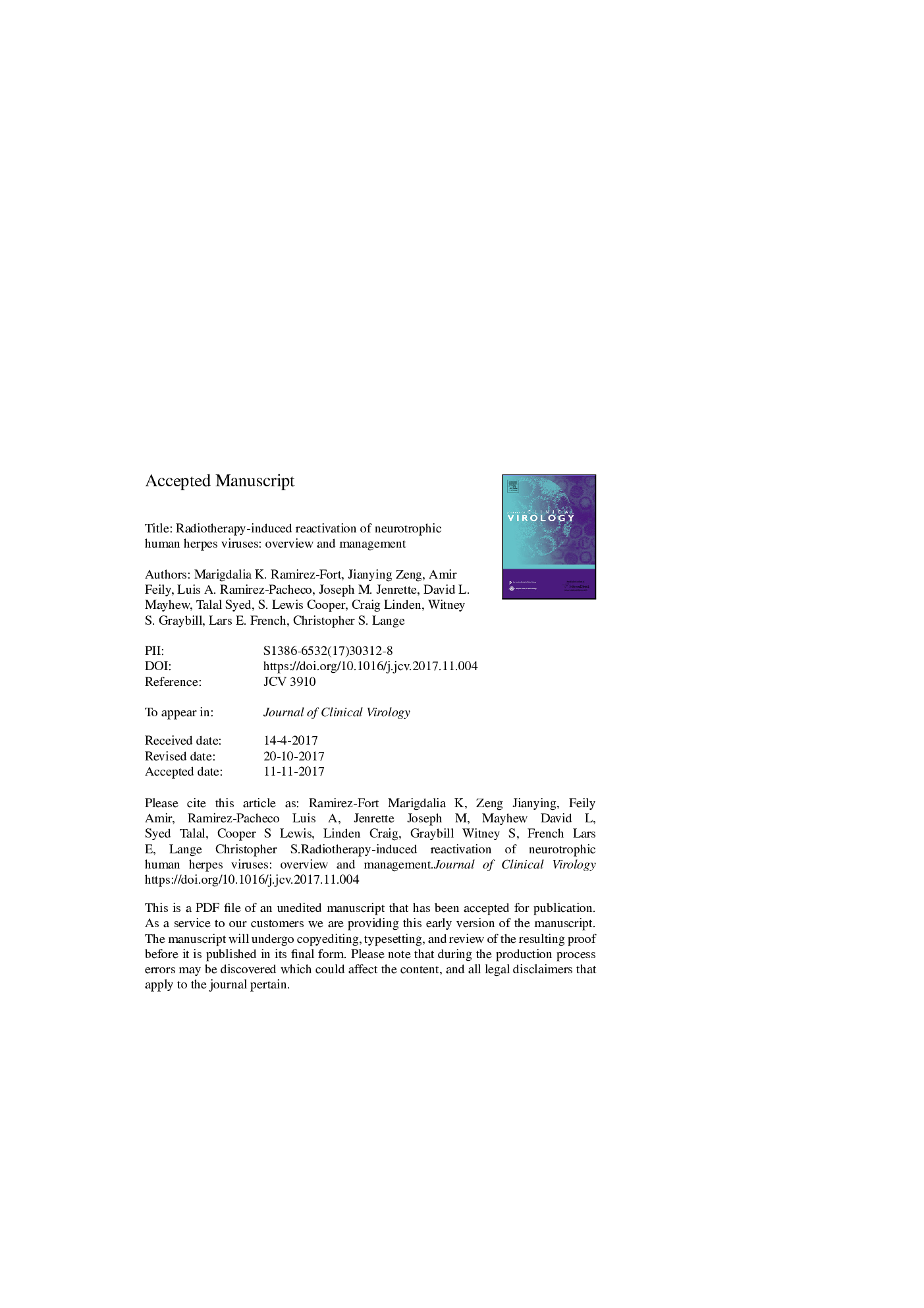| Article ID | Journal | Published Year | Pages | File Type |
|---|---|---|---|---|
| 8739854 | Journal of Clinical Virology | 2018 | 39 Pages |
Abstract
In the radiotherapeutic setting, serologic assays for HSV-1 and HSV-2 are feasible and can alert the clinician to patients at risk for viral reactivation. RT-PCR is specific in identifying the exact viral culprit and is the preferred diagnostic method to measure interventional efficacy. It can also differentiate between herpetic infection and radionecrosis. The MicroTrak® HSV1/HSV2/VZV staining kit has high sensitivity and specificity in acute lesions, is also the most rapid means to confirm diagnosis. Herpetic reactivation and recurrences during radiotherapy can cause interruptions, cessations, or prolongations of the radiotherapeutic course, thus decreasing the biologically effective dose, to sub-therapeutic levels. Active HHV infection within the treatment volume results in increased tumor radio-resistance and potentially sub-therapeutic care if left untreated. Visceral reactivations may result in fatality and therefore, a high index of suspicion is important to identify these active infections. The fact that such infections may be mistaken for acute and/or late radiation effects, leading to less than optimal treatment decisions, makes knowledge of this problem even more relevant. To minimize the risk of these sequelae, prompt anti-viral therapy is recommended, lasting the course of radiotherapy.
Keywords
Related Topics
Life Sciences
Immunology and Microbiology
Applied Microbiology and Biotechnology
Authors
Marigdalia K. Ramirez-Fort, Jianying Zeng, Amir Feily, Luis A. Ramirez-Pacheco, Joseph M. Jenrette, David L. Mayhew, Talal Syed, S. Lewis Cooper, Craig Linden, Witney S. Graybill, Lars E. French, Christopher S. Lange,
